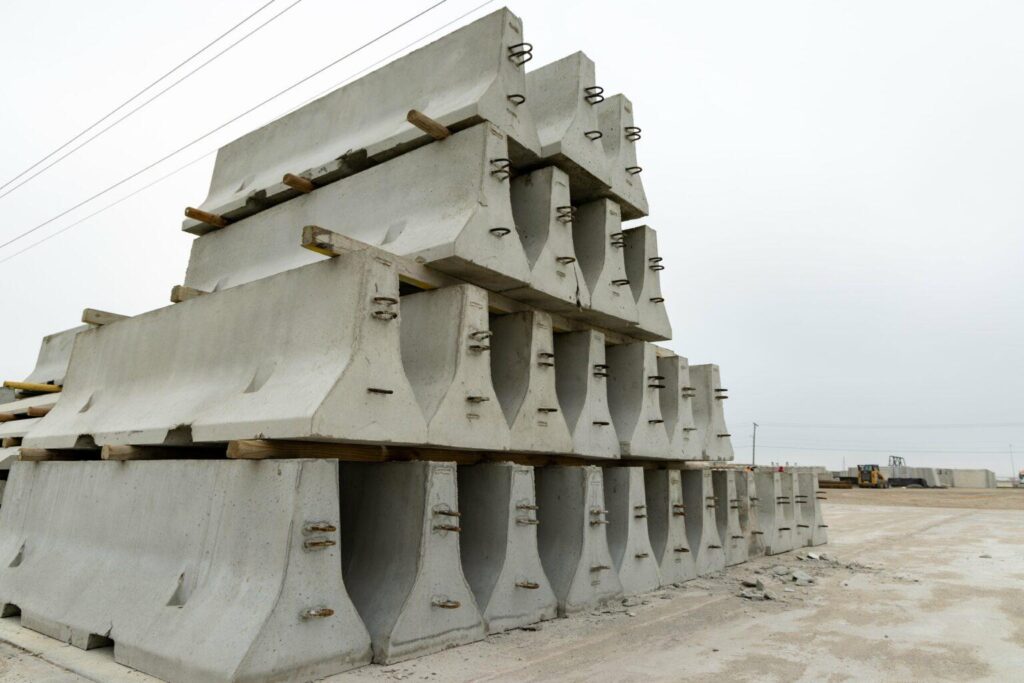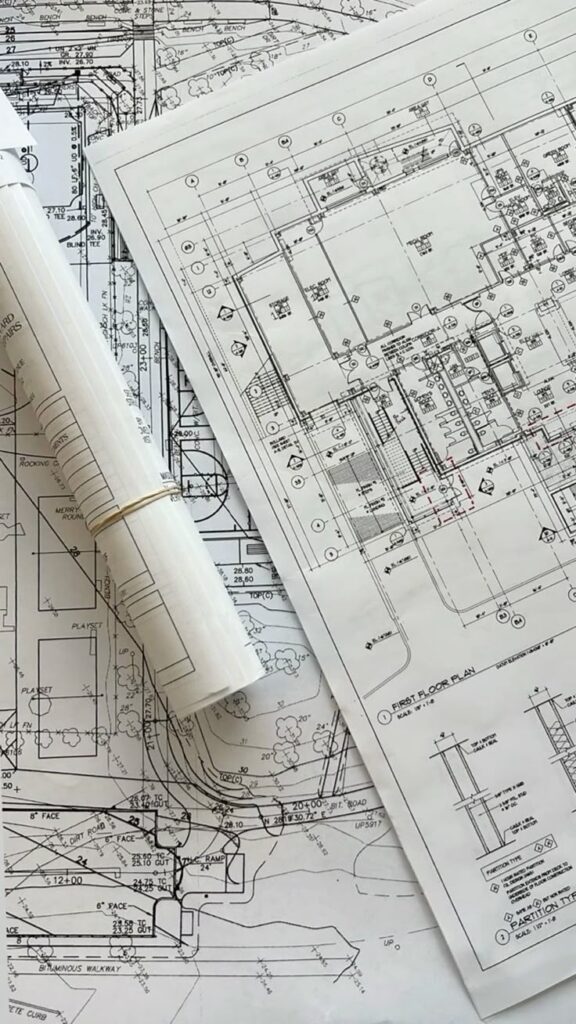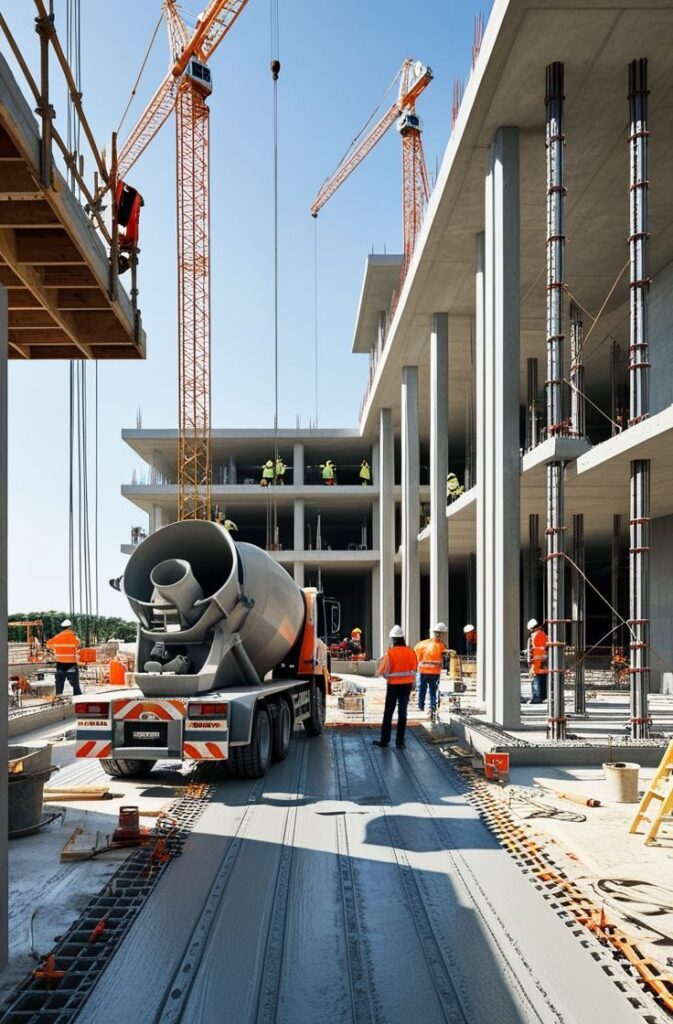K-Rail barriers, or Jersey barriers, are widely used on construction sites to promote safety and compliance. These concrete barriers provide a strong and reliable way to separate construction areas from traffic, minimizing the risk of accidents. They are important in guiding traffic and preventing vehicles from crossing into restricted zones.
In construction site safety, 10′ K-Rail barriers play a key role. Jersey barriers for road safety are often used for road safety and can be found in various projects where controlled access and protection are required. Their versatility and durability make them a staple in guaranteeing both worker and public safety.


Important for redirecting traffic in construction zones
K-Rail barriers play an important role in construction zones. They are typically used to redirect traffic safely away from work areas, reducing the risk of accidents. By guiding vehicles through these zones, workers and drivers can remain safer.
Concrete barriers are particularly useful for directing vehicles. Their solid build withstands impact, helping prevent vehicles from veering into dangerous areas. These barriers keep traffic organized and prevent confusion, which can lead to accidents.
Clear traffic management is key to maintaining a safe environment in construction zones. K-Rail barriers support this by providing a visible path for drivers to follow. This protects the workers and keeps the traffic flow smooth and efficient.
By serving as a physical guide, K-Rail barriers help reduce confusion among drivers. Clear markings and proper placement help convey the intended path for vehicles, contributing to safer travel in areas under construction.
Provides protection in high-risk areas
K-Rail barriers, also known as Jersey barriers, play an important role in construction site safety. These barriers are designed to prevent vehicles from entering restricted areas. By doing so, they help keep both workers and equipment safe from potential accidents.
In areas with high traffic, K-Rail barriers act as a strong physical separator between moving vehicles and work zones. This reduces the chance of vehicles accidentally entering the work area. They help guide traffic flow and protect pedestrians near busy roads.
These barriers are often used in locations where the risk of vehicle collisions is high. K-Rail barriers are made from durable materials and can withstand significant impact. This makes them a dependable choice for protecting construction sites and preventing accidents.
Used for Temporary Barriers at Large Events
K-Rail barriers are often used at large events to guide traffic and manage crowd flow. These barriers help keep people safe by creating clear pathways and preventing accidents. Their sturdy construction makes them suitable for handling large crowds.
At events like concerts or festivals, K-Rail barriers are set up to separate pedestrian areas from vehicle zones. This separation helps reduce the risk of injuries and allows emergency vehicles to move quickly if needed.
In addition to safety, K-Rail barriers help maintain order. These barriers define entry and exit points, making it easier for attendees to navigate the event space. They also assist in directing foot traffic, which helps prevent congestion and confusion.


Complies with NCHRP Report 350 for Safety
K-Rail barriers are widely used on construction sites to keep workers and vehicles safe. They need to comply with the NCHRP Report 350 standards. These guidelines outline the requirements for crash tests and evaluations to make sure the barriers provide adequate protection.
The tests involve running vehicles into the barriers at set speeds and angles. This helps check if the barriers can handle the force and remain effective. If a barrier meets these standards, it’s considered safe for use and can be trusted to reduce risks on site.
The report sets three performance levels for these barriers. Terminals and transitions are also evaluated based on six different performance levels. Meeting these requirements helps construction projects maintain higher safety standards, protecting both workers and drivers. Many companies focus on these standards to choose the right barriers for their sites.


Popularly Employed at Airports for Security
K-Rail barriers are commonly used at airports to maintain security and safety. These barriers serve as a physical deterrent to control areas that require restricted access. By placing them in key locations, airports can manage traffic flow and secure perimeter zones.
These barriers are especially useful in areas near runways and taxiways. By preventing unauthorized access, they help reduce risks related to unauthorized personnel entering secure zones. This improves both safety and security for passengers and staff.
Besides their role in traffic management, K-Rails serve as reinforced structures around vulnerable areas. Their sturdy design is effective against impacts, providing a strong line of defense. This helps in protecting necessary airport infrastructure.
Having these barriers in place allows airports to maintain operational safety while managing different activities. The flexibility of K-Rails makes them a popular choice at airports worldwide, contributing to overall security measures.
Conclusion
K-Rail barriers play a significant role in construction site safety. Their portable nature allows for easy installation and repositioning as needed. This flexibility is important in adapting to changing site conditions.
Made from sturdy materials, these barriers effectively protect both workers and pedestrians. They can also guide traffic, minimizing accidents around active construction areas. Their semi-permanent use is supported by compliance with safety standards.
Plastic K-Rails are increasingly favored for their lightweight and environmentally friendly features. Compared to traditional concrete barriers, they offer a modern approach to site management. This choice reflects a growing trend towards sustainable practices in construction safety.
- 246shares
- Facebook0
- Pinterest246
- Twitter0


